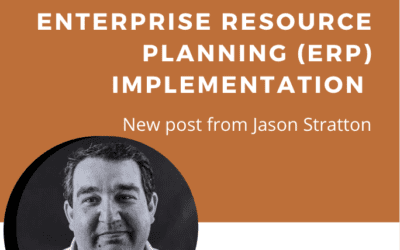This is a guest blog post by OMEP sponsors Schwabe Williamson and Wyatt.
Sometimes it helps to simplify a complicated concept by looking at it through the eyes of a child. The other day as I was thinking about this article, I jokingly asked my six-year-old son what he thought of supply chain management. Like any good aspiring lawyer, he responded with a question: “Do you see that squirrel out the window?” Recognizing the absurdity of my question, I then asked him what he thinks about when buying a gift for someone. He gave three important insights that I think we all can use to assist in reviewing and managing our supply chain. First, he said you need to make sure you buy something that someone wants. Second, you need to know how you are going to get the gift. And finally, he thought it important that you get your money back if the person does not like it. Let’s take a look at each of these three topics and see how they could be impacting your supply chain and ultimately the products or services you deliver to your customers.
Are you buying what your customers want?
This seems exceedingly obvious, but the fact is that we rarely take a step back and look at our supply chain holistically. An effective and efficient supply chain isn’t an end in itself. It is part of the process of delivering products or services that your customers want at a price they can accept. It is somewhat common for a company’s procurement team to be divorced from their sales team. However, it is important that these two functional areas work closely together to make sure that you are buying everything that your customers need, without paying for anything they are not buying. Rarely do I see a company review all of its supply contracts through the prism of what they need to deliver to their customers. Particularly with software-based companies or products, the most common time they realize they owe their customer something is after they’ve delivered it, and that customer asks, “What about X?” Although it may not be too late, it will cost you for this late, unexpected delivery.
Additionally, your supply chain may be leaking capital by unknowingly paying for functionalities, warranties, or services that your customers neither need nor care about. If you are paying for a three-year warranty or on-call services from your vendors, but you provide a one-year warranty and your own call center for your customers, you very well may be overpaying your vendors for services you do not really need.
How are you going to get the gift?
It is not uncommon for companies to not focus enough attention on those pesky legal terms around risk of loss, transfer of title, deliverance, testing and acceptance, while casually throwing around terms like FOB or FCA. It is important to carefully review any INCOTERMS and your insurance coverage for consistency and to avoid any ambiguities. There is no right answer, but plenty of ways to go wrong. In fact, sometimes I recommend avoiding INCOTERMS altogether and clearly spelling out when title transfers, who is responsible for arranging shipment, who is liable at each step, and who must insure the product at each stage.
Title means the legal ownership in the item purchased, whereas risk of loss describes whose responsibility it is if a purchase is lost or damaged. When you use INCOTERMS, each different term defines the specific point at which the risk of loss transfers. Do not casually throw around INCOTERMS without double-checking with the International Chamber of Commerce books. Each of these terms is loaded with several legal terms that can have serious consequences for you and your company.
Title is different from risk of loss as the parties can specify a different time and place for title to transfer. For example, a supplier that sold a major piece of equipment to a customer may want to specify that title doesn’t transfer until they receive payment from the buyer, or they could transfer title subject to a security interest in the product (a lien) that would be released upon payment. A supplier could specify that title will transfer at some point while the item is in transit.
The reason why a supplier or buyer might want to have title transfer at some other point is that the sale legally occurs at the location where the title transfers. Where the sale occurs can be very important. The supplier in Country A with a customer in Country B may not want the sale to occur in Country B. That would make that a local sale within Country B. A local sale would subject the supplier to needing to be registered to do business within Country B. It would make the supplier also subject to the laws and taxes of Country B, which may not be favorable.
A buyer that was purchasing a product for resale could have a similar concern. For example, a buyer may want to have a simultaneous purchase and sale of the items while the product is on the high seas. The buyer purchases the item from the supplier in Country A. The delivery terms will cover the delivery and will specify that title transfers to the buyer on the high seas while the product is in transit. So when title passes to the buyer while the product is on the high seas, the buyer may also transfer title to the customer from Country C simultaneously so the sale is not occurring in Country C. That makes it an international sale, and the customer in Country C would need to import the product into Country C.
Did you like this blog post? Subscribe to get monthly updates
What happens if the customer doesn’t like it?
It is important to make sure you have adequate protections in case you are not satisfied with the product. Related to the above discussion, it is important to make sure your in-processing testing and acceptance procedures match up with your contractual terms. Better yet, make your contractual terms, the “tail,” match your in-processing procedures, the “dog.” Your rights will be different, and therefore how you handle a quality issue, depending on whether the product has been delivered or accepted, and whether title and risk of loss have transferred. Remember, these are all different concepts that may or may not occur simultaneously. Make sure the process is logical and follows your internal procedures. You do not want to have different procedures for different goods, as it is doubtful your team will be able to handle multiple different timelines and processes for newly delivered goods.
Similarly, you will want to carefully review the warranties, indemnification and limitations on liability provisions to make sure they give you adequate coverage. A few years ago, a client asked me to review a new supply contract they had already signed. The supply contract was for a commodity type piece that goes into their product. They bought each of the commodity widgets for about 3 cents each. They would install a couple of these widgets into each of their $500 final products. The client’s supply manager was thrilled because he got the other side to agree to reimburse the company for any faulty screws. Sounds good, right? The problem was that by the time they found out the screws were bad, they would have been integrated and sold in tens of thousands of consumer goods. Yes, they would get the cost of the screws back, but that $5,000 would be a drop in the bucket for the tens of thousands of dollars a recall would cost to replace all of the faulty screws.
Conclusion
Your company probably dedicates a lot of time to supply chain management. You would not be in the position you are if you didn’t. However, in my experience, it is the rare company that takes a step back and comprehensively examines its supply chain through the prism of its sales process. It takes time and it takes resources; however, like many legal issues, an ounce of prevention is better than a pound of cure. By undertaking this top-down review, it is possible that you can decrease your procurement costs now, while simultaneously adding additional protections to your supply chain. These concepts aren’t complicated—heck, a six-year-old understands them. But often we are too invested in the process to see what is going on. Getting an outside perspective or having a third party undertake an integrated review of your supply chain may yield benefits.



